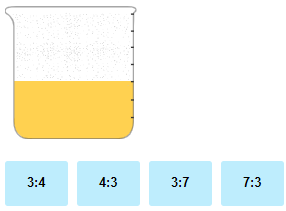
Ratios and Proportions
Concept
The ratio is used for comparing two quantities of the same kind. The ratio formula for two numbers says a and b is given by a : b or . When two or more such ratios are equal, they are said to be in proportion. The concept of ratio and proportion is majorly based on ratios and fractions. A proportion is read as x is to y as z is to w.
=
where w & y are not equal to 0. And thus, x : y : : z : w
Rules
The order of the values in a ratio relates directly to the order of the quantities described. When describing a ratio that is a part of a whole, a fraction is appropriate. Ratios can also be written using the word “to” or by using a colon between the two numbers.
To find an equivalent ratio, multiply or divide both quantities by the same number.
To determine whether two ratios are equivalent, write them as simplified fractions. If the fractions are equal, the ratios are equivalent.
Identifying proportional relationships through graphs:
To determine whether two quantities are proportional, graph the quantities on a coordinate plane. If the graph of the two quantities is a straight line through the origin, then the two quantities are proportional.
Identifying proportional relationships through tables:
Write the ratios as fractions and then reduce them.
If the reduced fractions are the same, the ratios are proportional.
Example
Solution
The order of the values in a ratio relates directly to the order of the quantities described:
stars to circles or stars : circles
The first number (on the left) will be the number of stars shown. The number of circles will go on the right.
stars : circles
3 : 2
Practice Ratios and Proportions

Ratio – a comparison of two quantities by division. Ratios describe a part-to-part comparison or a part-to-whole comparison.
Equivalent ratios – Two ratios that have the same value.
Ratio tables show pairs of corresponding values, with an equivalent ratio between each pair.
Proportion refers to a part, share, or number considered in relation to a whole, majorly a comparative relation. Two equivalent ratios are always in proportion.






